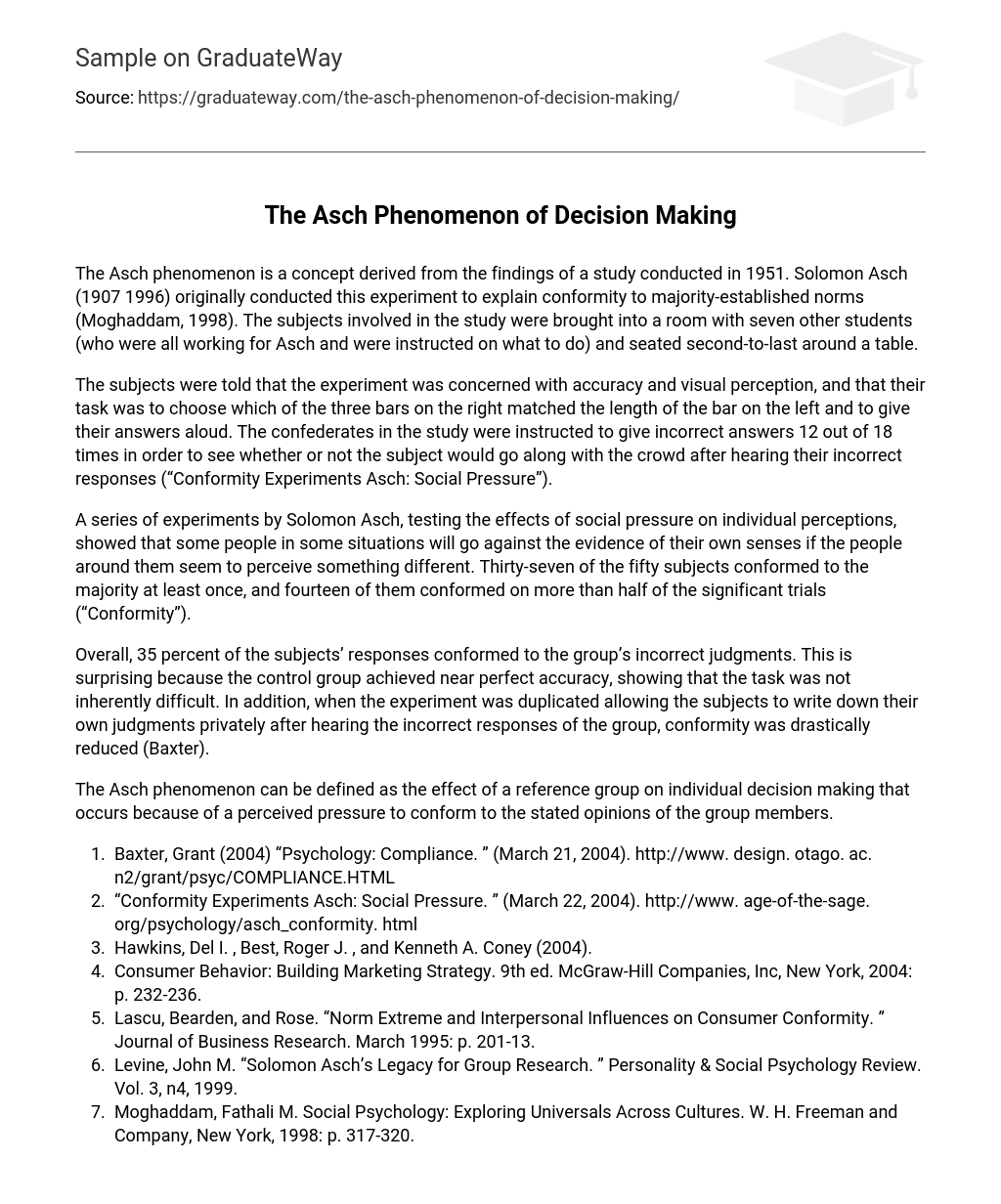The Asch phenomenon is a concept derived from the findings of a study conducted in 1951. Solomon Asch (1907 1996) originally conducted this experiment to explain conformity to majority-established norms (Moghaddam, 1998). The subjects involved in the study were brought into a room with seven other students (who were all working for Asch and were instructed on what to do) and seated second-to-last around a table.
The subjects were told that the experiment was concerned with accuracy and visual perception, and that their task was to choose which of the three bars on the right matched the length of the bar on the left and to give their answers aloud. The confederates in the study were instructed to give incorrect answers 12 out of 18 times in order to see whether or not the subject would go along with the crowd after hearing their incorrect responses (“Conformity Experiments Asch: Social Pressure”).
A series of experiments by Solomon Asch, testing the effects of social pressure on individual perceptions, showed that some people in some situations will go against the evidence of their own senses if the people around them seem to perceive something different. Thirty-seven of the fifty subjects conformed to the majority at least once, and fourteen of them conformed on more than half of the significant trials (“Conformity”).
Overall, 35 percent of the subjects’ responses conformed to the group’s incorrect judgments. This is surprising because the control group achieved near perfect accuracy, showing that the task was not inherently difficult. In addition, when the experiment was duplicated allowing the subjects to write down their own judgments privately after hearing the incorrect responses of the group, conformity was drastically reduced (Baxter).
The Asch phenomenon can be defined as the effect of a reference group on individual decision making that occurs because of a perceived pressure to conform to the stated opinions of the group members.
- Baxter, Grant (2004) “Psychology: Compliance. ” (March 21, 2004). http://www. design. otago. ac. n2/grant/psyc/COMPLIANCE.HTML
- “Conformity Experiments Asch: Social Pressure. ” (March 22, 2004). http://www. age-of-the-sage. org/psychology/asch_conformity. html
- Hawkins, Del I. , Best, Roger J. , and Kenneth A. Coney (2004).
- Consumer Behavior: Building Marketing Strategy. 9th ed. McGraw-Hill Companies, Inc, New York, 2004: p. 232-236.
- Lascu, Bearden, and Rose. “Norm Extreme and Interpersonal Influences on Consumer Conformity. ” Journal of Business Research. March 1995: p. 201-13.
- Levine, John M. “Solomon Asch’s Legacy for Group Research. ” Personality & Social Psychology Review. Vol. 3, n4, 1999.
- Moghaddam, Fathali M. Social Psychology: Exploring Universals Across Cultures. W. H. Freeman and Company, New York, 1998: p. 317-320.





